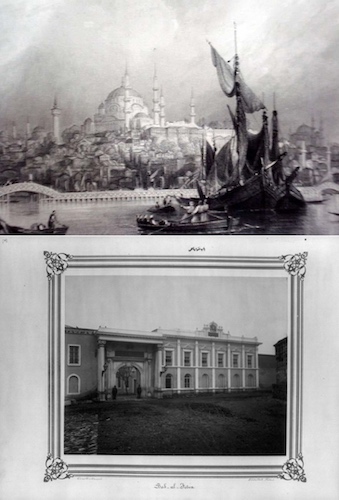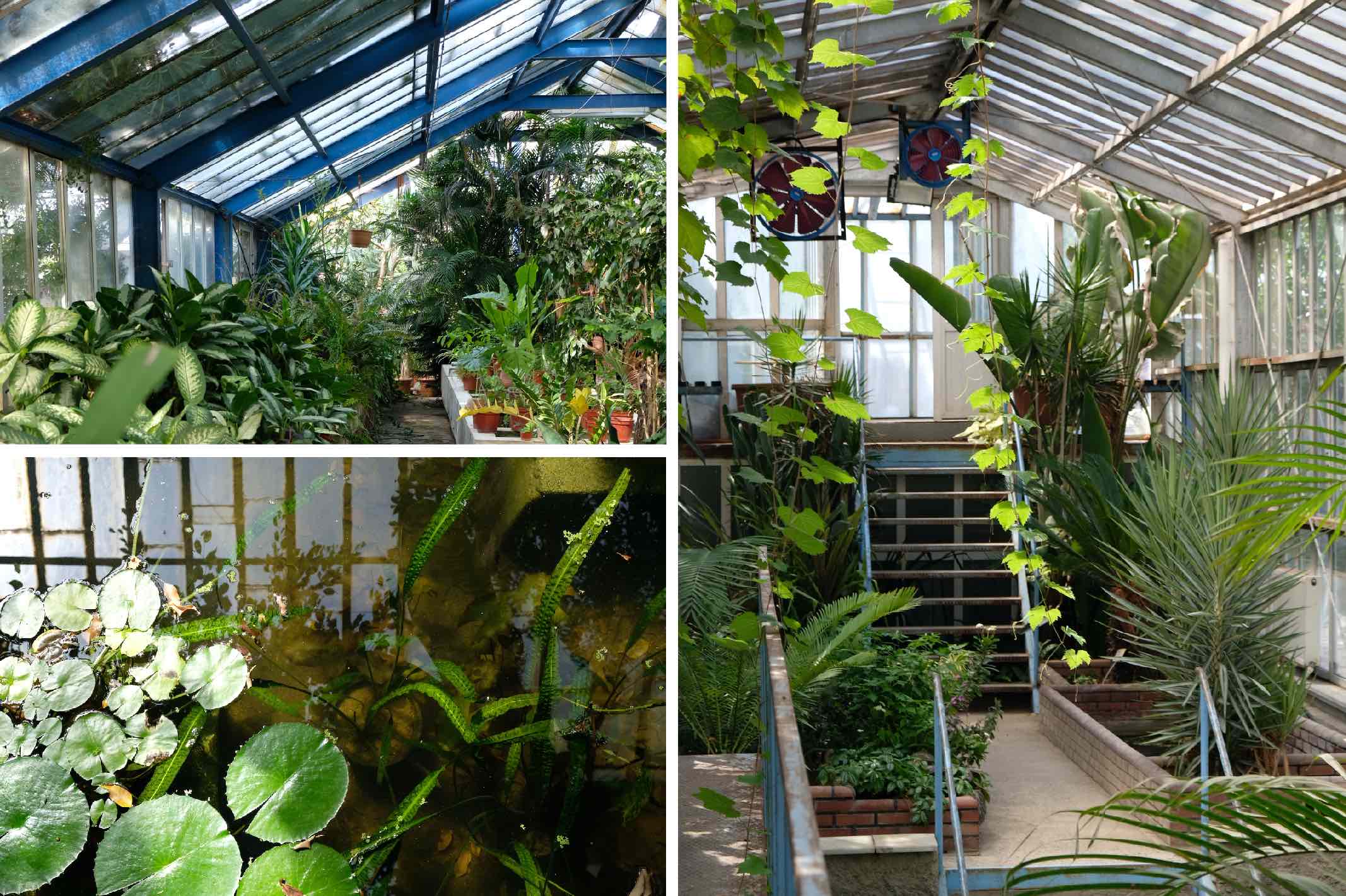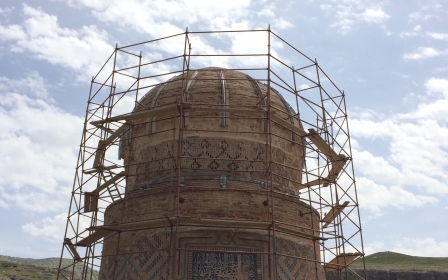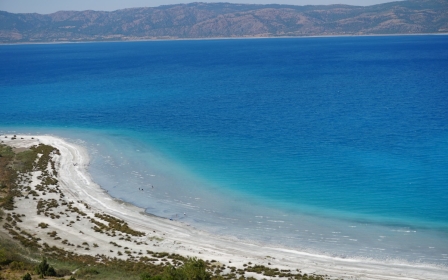Istanbul's Alfred Heilbronn Botanical Garden and its contested history
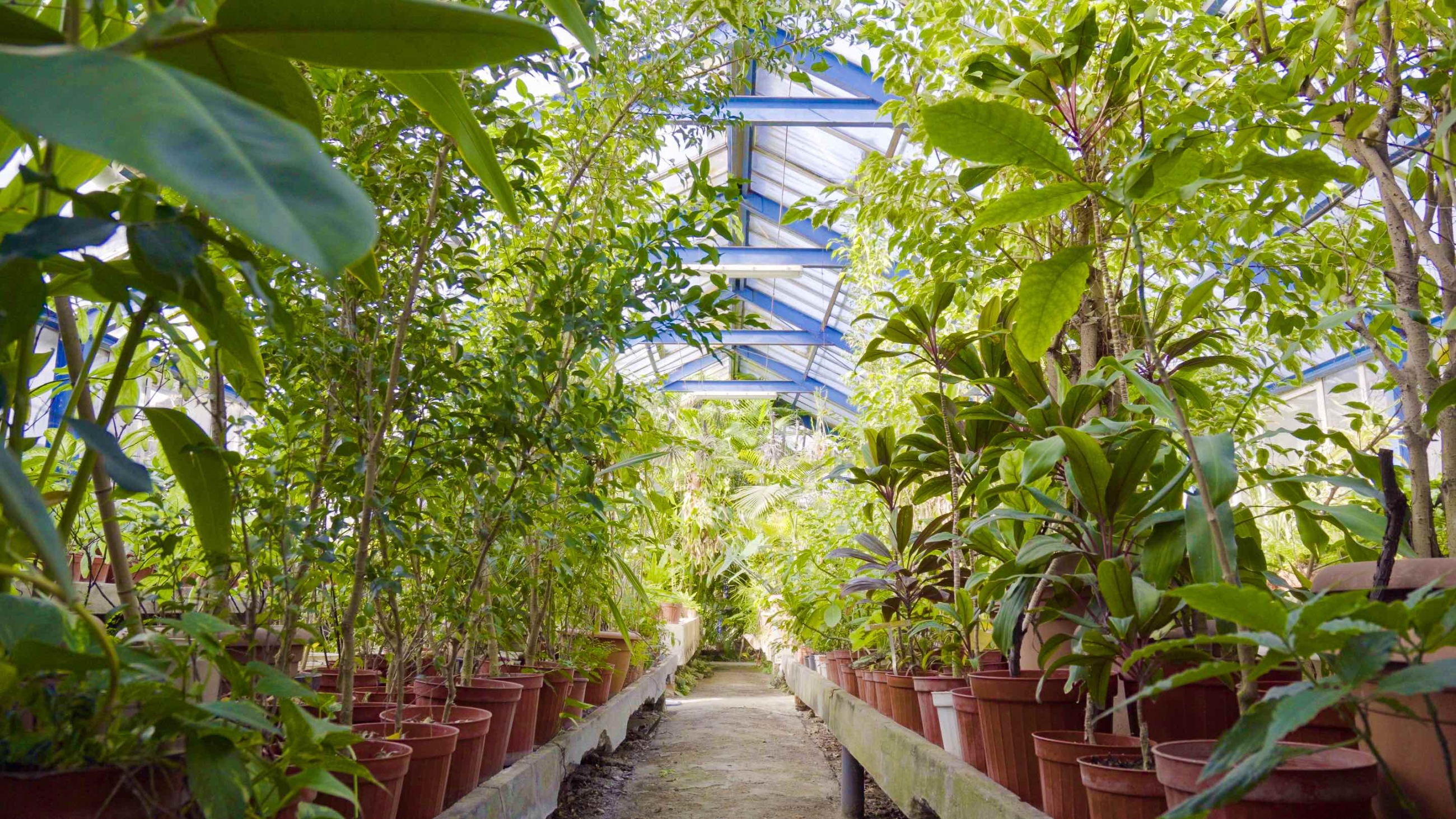
Istanbul’s old city is densely populated with wonders. From the Hagia Sophia to Beyazit Tower and the Column of Constantine, the historic centre is a chaotic maze brimming with tourists, traders and locals alike.
Among the multitude of grey domes and brown roofs, it can be difficult to locate a green spot to break away and enjoy the breeze coming off the Bosphorus. For years, one such retreat has been the Alfred Heilbronn Botanical Garden. However, recent developments - and a clash of ideologies that strikes deep into the soul of Turkey - have left this beautiful spot inaccessible to the public.
Located near the tomb of the Ottoman Empire’s great architect Mimar Sinan (1490-1588) and the breathtaking 16th century Suleymaniye Mosque, for decades the botanical garden has been an urban oasis.
Founded by Jewish academics fleeing the Nazi regime in 1935, it currently boasts more than 5,000 species of plants in a 15,000 square metre plot, as well as a stunning view of the Golden Horn and the Galata Tower.
New MEE newsletter: Jerusalem Dispatch
Sign up to get the latest insights and analysis on Israel-Palestine, alongside Turkey Unpacked and other MEE newsletters
“We used to go there and have picnics, and enjoy the great view,” says Dilsad Aladag, an architect turned artist, who has been documenting the history behind the garden to help preserve its memory, with her colleague Eda Aslan. “It was such a liberating place, from all the suffocating issues we deal with as Istanbulians and as then-university students.”
Aladag and Aslan, also an artist, have been visiting the garden for years, only to recently learn that it is in risk of ruin.
Over the years, the Istanbul Muftiate, the body governing imams and mosques in the capital and whose headquarters happens to be adjacent to the garden, made various attempts to purchase it from the current owners, Istanbul University, and transfer it to another location.
While the university was initially amenable to this request, plans were disrupted when nationwide mass anti-government protests erupted following attempts to replace Istanbul’s Gezi Park with a shopping mall in 2013.
Locals opposed plans by Turkish President Recep Tayyip Erdogan to rebuild an Ottoman-era barracks in the park, that would function as a mall similar to one that used to be on the same site until the 1940s. They argued that Istanbul didn’t need another shopping mall and called instead for saving the rare green space in the city centre.
In this climate of tension, the transfer of the botanical garden would have become another point of contention among the Gezi Park activists, causing the government – and the university – to halt their plans.
However, in 2018 the university finally transferred the property to the Muftiate and the garden has been closed to visitors ever since, except for pre-arranged, exceptional visits. The garden is believed to be poorly maintained, its condition having already been deteriorating prior to its closure. The fate of the many valuable plants is unknown, a cause for concern for both environmental activists and academics.
“It was very clear since 2017 that the garden could be destroyed. That’s why we decided to do something,” Aladag says
“We wanted to investigate the history of this garden, document its development and record it with pictures, videos, interviews, and even with an art exhibition.”
The pair ended up uncovering an intriguing history of a site that had been a regular battleground between various political camps.
Changing lands, changing hands
For centuries, the plot the botanical garden stands on today was known as the Agha’s Gate, or Agakapisi, the official residence of the Agha, the chief of the powerful Janissary Corps, an elite infantry unit in the standing army of the Ottoman sultans from the 15th to 18th centuries. Known for their military prowess, the janissaries eventually became increasingly costly and a source of tension, conducting regular coups against political leaders and criticising proposed reforms.
The reformist Sultan Mahmud II famously dismantled the Janissary Corps in 1826, in what became known as the “Auspicious Event” after they revolted against his newly formed, modern, westernised army. Following violent clashes between the janissaries and state forces that left thousands dead, the centuries-old corps were finally disbanded.
The Sultan eventually transferred the plot of land to Shaykh al-Islam, or the Grand Mufti, the empire’s ultimate Islamic legal authority. Mahmud II also banned the use of the Agakapisi name for the area, instead calling it Bab-i Mesihat or the Gate of Religious Decisions, where Shaykh al-Islam would issue religious decrees.
In time, the state constructed an L-shaped stone main building, and other structures to house the clergy in a modern setting.
When the new secular Turkish Republic dissolved the Shaykh al-Islam’s office in the 1920s, it transferred parts of the buildings to the newly established Directorate of Religious Affairs, known as the Diyanet, which created the Istanbul Muftiate. The L-shaped main building, on the other hand, was assigned to the Istanbul Girls High School.
“You would have young girls in shorts exercising in the very courtyard of the Muftiate - a message by the secular republic that things would be different from now on," Aladag says.
Though tensions weren't new for the venue, since the janissaries had been executed in the same courtyard, and the Muftiate to this date exhibits the stone where heads were decapitated, it also marked the beginning of property disputes with the religious conservatives.
The Girls High School was quick to draw criticism from notable religious figures, such as Said Nursi, an influential theologian and staunch anti-communist who later established one of the most consequential movements in the republic’s history.
“An office that for hundreds of years had the fortune to be the light of the Sharia now is the big girl’s high school and playhouse,” Nursi declared.
The school was only able to utilise the location for three years and the building was destroyed following an electrical fire in 1926. Much of the national press was also clearly averse to the location of the girls' school.
Nursi remained forthright regarding his views on the matter: “And so that night it burnt down everyone said: 'What a shame'. I and those who like me said: 'Praise be to God'."
The origins of the garden
The building remained out of action following the fire, until a group of German Jewish academics emigrated to Turkey in 1934, fleeing the Nazi regime. They sought refuge in the new republic, helping to establish a modern university system on the invitation of then-president Kemal Ataturk.
Professor Alfred Heilbronn, an expert on plant physiology and genetics, was among the 150 German Jewish academics and families who found himself starting a new life in Istanbul. He lived in a small mansion belonging to Istanbul University. His request for better and more modern educational facilities led the Turkish government to order the construction of a new biology department building near the Istanbul Muftiate.
Why the government chose the location remains a mystery. But historian Necdet Sakaoglu told Aladag and Aslan that the top Islamic clergy in the Ottoman Empire had a long tradition of maintaining gardens. Shaykh al-Islam, in particular, had an interest in floriculture.
Heilbronn himself directed the design and construction of a botanical garden, which would be adjacent to the Muftiate and the department. The garden would have a large greenhouse and open-air terraces that would host hundreds of plants from different countries in 23 separate sections.
In order to quickly establish a garden with diverse plants, in 1935 Heilbronn and his colleague Leo Brauner sent letters to a number of countries requesting seeds.
Heilbronn maintained the garden and continued to teach his students until 1957 when he was legally required to retire under Turkish law; that same year he returned to Germany. His former student and wife, Mehpare Heilbronn, a Turkish botanist, ended up following in her husband’s footsteps three years later after she, along with 146 other academics, were dismissed from their posts following a 1960 military coup.
Like her husband’s forced immigration to Turkey in the 1930s, this time Mehpare found herself being exiled back to Germany, taking 20 boxes of plant samples from Anatolia with her.
The Garden of (Not) Forgetting
Decades later, the tug of war on the plot of land resurfaced in 1993, when the Istanbul Muftiate claimed ownership over the garden under a new law, claiming that the biology department was arbitrarily occupying the Muftiate’s property.
Following a series of protests and newspaper articles questioning the motivation behind the Muftiate’s attempted takeover, the government declared the garden “a protected area”, registering it as a site of natural wealth in 1995.
But the Muftiate didn't stop there. In 2002, their luck turned. With a strong government run by religious conservatives, their cause was likely to gain some traction.
More than 20,000 people signed an online petition to preserve the botanical garden
After convincing the government, and securing the approval of President Recep Tayyip Erdogan, the Directorate of Religious Affairs finally signed a protocol with Istanbul University for a transfer of ownership, asking the biology department to relocate in 2017.
The move itself triggered another wave of public protests and activism. More than 20,000 people signed an online petition to preserve the botanical garden. The academics living in Germany also reached out to German Chancellor Angela Merkel, who sent a delegation from the German consulate in Istanbul to inspect the garden.
Eventually Istanbul University released a statement declaring that the garden wouldn’t be demolished, even though the biology department was being relocated, and that the Muftiate and the academics would be joint caretakers.
Aladag and Aslan, sceptical of the promises, began the process of documenting the botanical garden with interviews, investigating archives and even collecting plant samples from the garden while it was still open for the public like “amateur gardeners”.
They interviewed the academics and collected photos from the 1930s, along with letters and magazines published by the garden's biology department. Their research has taken them to Germany, where Kurt Heilbronn, Alfred and Mehpare’s only son, had been living, working as a psychotherapist.
“We discovered the contents of several old boxes kept in the basement in Heilbronn’s home,” Aslan said. “For years, Mr Kurt didn’t want to look through the old documents and photos. He couldn’t do it alone. He had tears in his eyes as we opened one box after another. It was very meaningful for each of us. It gave me goosebumps.”
With their findings, the pair launched an art exhibition, currently featured in the Depo Art Gallery in Istanbul. The exhibition, The Garden of (Not) Forgetting, is greatly influenced by the artefacts they found during their journey.
A highlight is an audio exhibit in which loudspeakers broadcast the first letter Heilbronn sent out to various botanical gardens around the world in his mission to gather seeds, in four different languages. Another is a replica of one of the garden’s pools, complete with duckweed almost entirely covering the surface.
A 20-minute video is also being broadcast on a loop in the main exhibition area, in which Heilbronn explains the stories behind the photos he, Aladag and Aslan found. Notable figures such as Ismet Inonu, the second president of the republic, who paid a visit to the department and the botanical garden in the 1940s, also feature in the photos.
There are also drawers of samples the pair collected from the garden that could serve as souvenirs for future generations in the event of its disappearance. "We couldn't get access to the herbarium, so we created our own collection as amateur botanists," Aladay says, laughing.
Another video installation shows pages of plant samples collected by Mehpare Heilbronn from throughout Anatolia and brought over to Germany, as well as a book co-written by Aladag and Aslan with photos and interviews chronicling their journey from Istanbul to Germany.
“Our aim is to raise awareness about this beautiful garden and memorialise its history,” Aladag says.
In a statement to MEE, the Istanbul Muftiate said that Istanbul University students, in coordination with the biology department, are still able to visit the garden.
“One personnel from the biology department and two personnel from the Muftiate are maintaining the garden,” the statement read. “The garden was closed to the public due to reconstruction of the administrative buildings. But exceptional visits could be done escorted by the security.”
Three years since its closure, Aladag and Aslan would like to visit the garden one more time, if they can somehow qualify for the "exceptional" category.
Their art exhibition and journey has already triggered a wave of interest among the art scene in Istanbul, and in the press.
While they are aware that the Alfred Heilbronn Botanical Garden’s destiny isn’t in their hands, they remain passionate about trying to save it. Visitors are given free prints of the plants as part of the exhibition, "so they can take these pictures home, carrying the seeds of the garden, spreading it," Aladag said.
"In this way the garden would never be destroyed. It will be alive in the memories and on the walls of homes."
The Garden of (Not) Forgetting exhibition is running at Depo Art Gallery in Istanbul until 6 June
Middle East Eye delivers independent and unrivalled coverage and analysis of the Middle East, North Africa and beyond. To learn more about republishing this content and the associated fees, please fill out this form. More about MEE can be found here.




